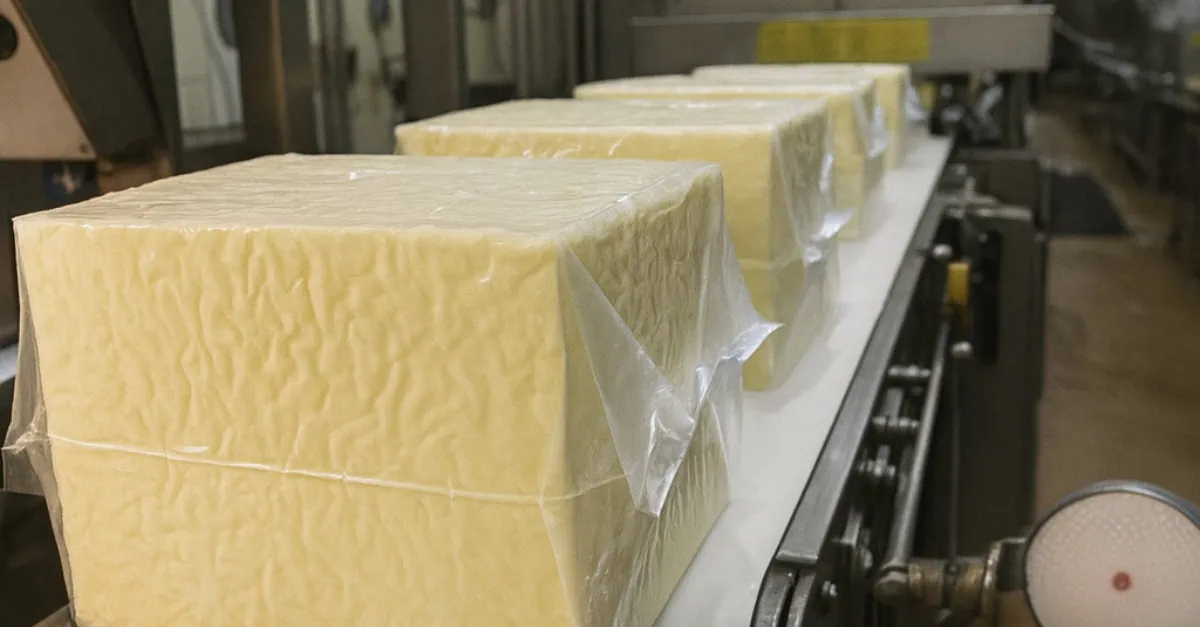US dairy markets turned green this week, with butter and cheese prices bouncing back strongly on the CME call. The price increases come despite cold storage data showing mixed inventory trends and ongoing fundamental concerns about long-term market direction.
Butter stocks decline while cheese inventories grow
Cold storage reports released last Friday revealed that butter stocks at the end of August remained below year-ago levels, continuing a trend that has persisted since April. US butter exports have been substantially higher over the first seven months of the year, with low US prices triggering shipments to numerous international markets when European prices were elevated and New Zealand had limited export availability.
Cheese production and stocks both increased year-over-year. August ending cheese stocks showed relatively small growth compared to the previous year, though production volumes were higher.
Price movements raise questions about market direction
The CME call saw butter prices increase based on the lower stock levels, though the year-over-year decline in ending stocks follows the pattern established throughout the current milk season. The price increase may reflect profit-taking from short positions as well as possible anticipation of August product production volumes.
The jump in cheese prices on the CME call is less straightforward given the higher production and stock levels. Questions remain about whether the production outlook for cheese differs from the overall milk supply picture, or whether the relatively modest year-over-year growth in stocks indicates sufficient demand for cheese at current lower price levels. The recent price fall may have created conditions for a rebound due to technical factors.
Fundamental outlook remains heavy
Despite this week’s price gains, the fundamental outlook for US dairy remains bearish. The dairy herd size is the largest it has been in the last five years. Milk production continues as long as feed prices stay low and farmers do not begin culling at a rapid pace. Currently, there are no indications that the supply side is contracting, meaning any firmer market conditions would need to come from the demand side, as seen in products like WPC80 and WPI.
Chinese dairy demand shows continued weakness
Historical market dynamics often suggested that Chinese demand could absorb global dairy surpluses. Recent data reveals why this expectation has faded from market commentary.
Chinese WMP consumption peaked at 3.27 billion pounds in 2021 and dropped to 2.56 billion pounds by 2024—a decline of 710 million pounds or 21.7%. During the same period, domestic production increased from 1.34 to 1.41 billion pounds.
SMP consumption fell even more dramatically, crashing from 937 million pounds in 2021 to 635 million pounds in 2024—a 32.2% decline. Production remained negligible throughout this period, hovering around 75-95 million pounds.
Early 2025 data shows consumption dropping to levels not seen in years. Despite dramatically cutting imports in the first quarter of 2025, China still managed to build stocks—a clear indication that demand fell faster than import reductions.
Chinese milk production begins to decline
Chinese raw milk production grew steadily through the third quarter of 2024. The fourth quarter of 2024 saw the first year-to-date declines, and 2025 has continued this downward trend. After years of expansion, Chinese dairy farmers are pulling back production.
Market implications
The data reveals three notable patterns in Chinese dairy markets:
Both WMP and SMP consumption fell dramatically while production stayed relatively flat. The decline represents consumption destruction rather than import substitution through domestic production growth.
China built stocks in 2025 even while reducing imports substantially, indicating demand weakness rather than successful domestic supply replacement.
After years of growth, Chinese milk production turned negative, suggesting domestic market conditions do not support continued production expansion.
For China to meaningfully impact global dairy markets would require either a surge in dairy product consumption, a significant fall in domestic production, or some combination of both. Current trends point in the opposite direction.
When a country can reduce imports substantially and still accumulate inventory, global dairy markets need to find balance without relying on a resurgence in Chinese demand. The world’s dairy surplus does not appear likely to find a home in China in the near term.
This article is part of a full market analysis on the US dairy market: https://app.vespertool.com/market-analysis/2329?commodity=dairy





